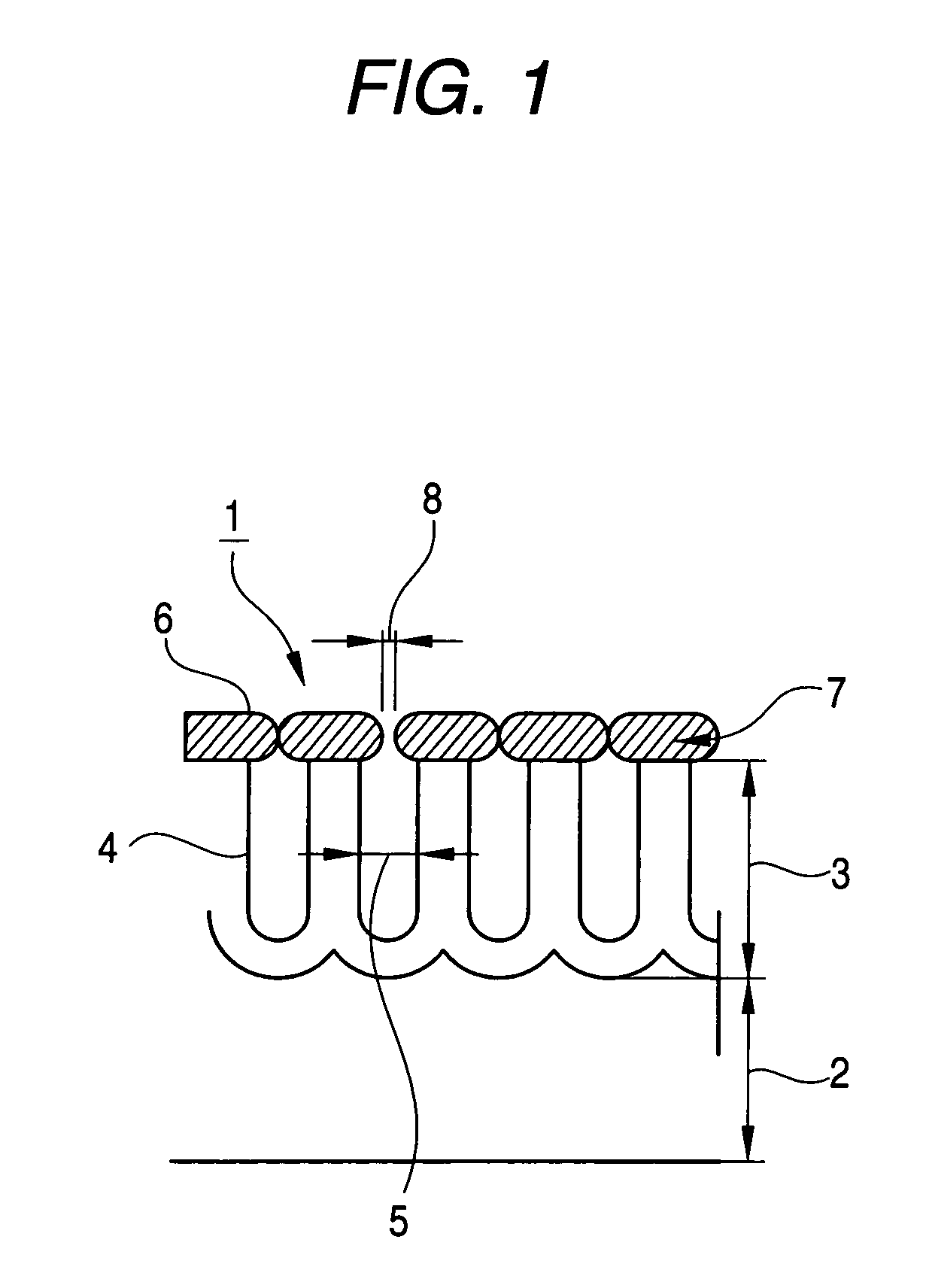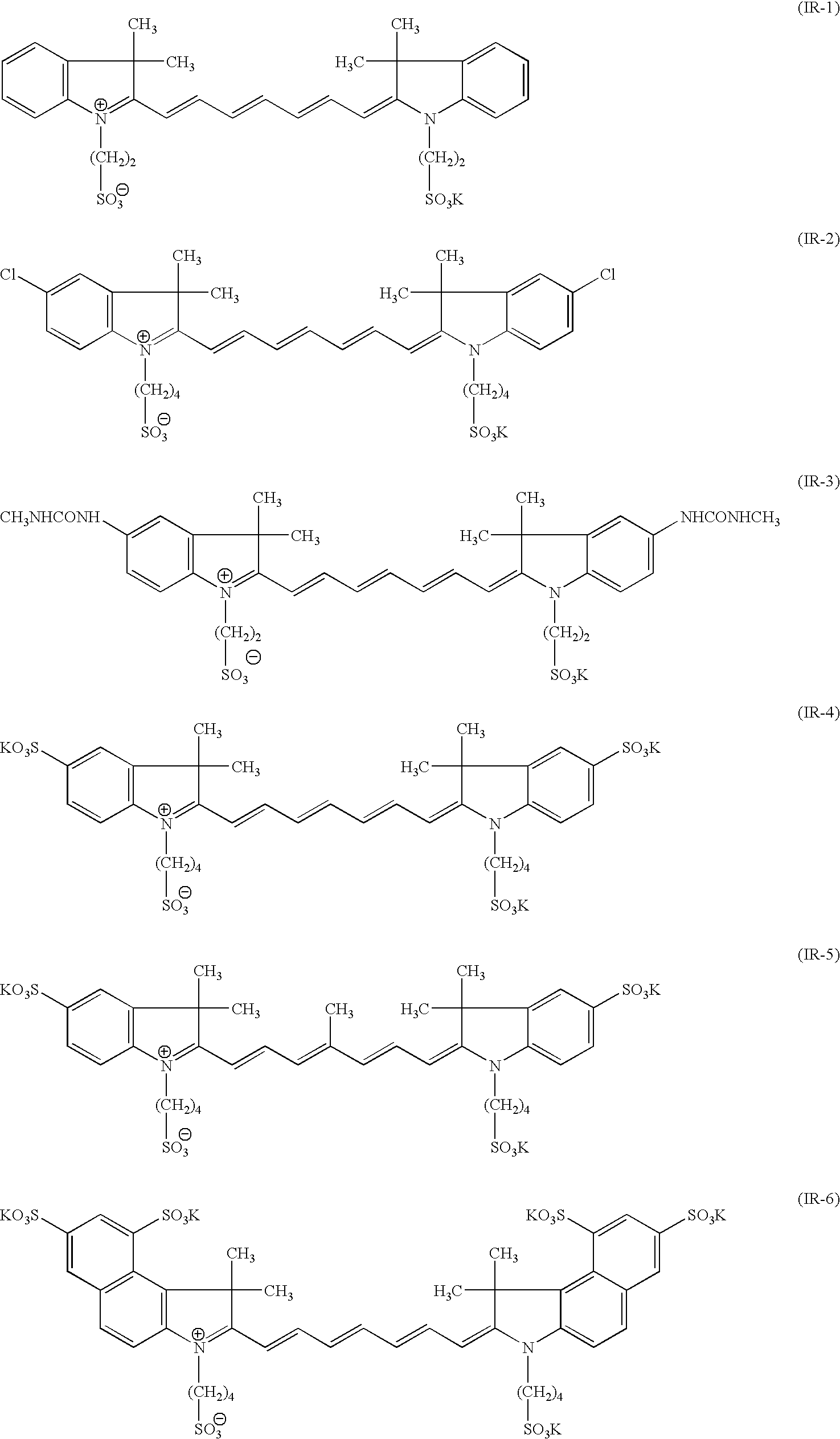Method for production of support for lithographic printing plate precursor and support for lithographic printing plate precursor
a technology of lithographic printing plate and support, which is applied in the direction of printing, surface reaction electrolytic coating, recording information storage, etc., can solve the problems of low solubility, low sensitivity, and prone to film residue, and achieve high sensitivity, excellent press life, and efficient utilization
- Summary
- Abstract
- Description
- Claims
- Application Information
AI Technical Summary
Benefits of technology
Problems solved by technology
Method used
Image
Examples
example 1
1. Production of Support for Lithographic Printing Plate Precursor
[0212]An aluminum plate (defined as JIS A1050) having a thickness of 0.24 mm was sequentially subjected to the treatments shown below to prepare an aluminum support.
(a) Etching Treatment with Alkali Agent
[0213]The aluminum plate was subjected to etching treatment by spraying an aqueous solution containing sodium hydroxide in concentration of 26 wt % and an aluminum ion in concentration of 6.5 wt % at 70° C., thereby dissolving 6 g / m2 of the aluminum plate. The plate was then washed by spraying water.
(b) Desmut Treatment
[0214]The aluminum plate was subjected to desmut treatment by spraying an aqueous solution containing nitric acid in concentration of 1 wt % (containing 0.5 wt % of aluminum ion) at 30° C., and then washed by spraying water. The aqueous solution of nitric acid used in the desmut treatment was waste liquid from the step for electrochemical surface roughening treatment using an aqueous solution of nitric ...
example 2
[0227]A lithographic printing plate precursor according to the invention was prepared in the same manner as in Example 1 except that Substrate 1 subjected to the formation of layer of inorganic compound particles was immersed in an aqueous solution containing 4.5 g of NaF and 585 g of Na2HPO4 in 3,910 g of water (pH 4.3) at 60° C. for 10 seconds, then immersed in a 1 wt % aqueous solution of sodium silicate No. 3 at 30° C. for 60 seconds as a step of (k) hydrophilization treatment, washed by spraying water and dried to perform sealing treatment in place of the treatment with a 10 wt % aqueous solution of sodium silicate No. 3 to perform the step of (i) sealing treatment. The pore diameter of the layer of inorganic compound was substantially 0.
PUM
| Property | Measurement | Unit |
|---|---|---|
| particle diameter | aaaaa | aaaaa |
| particle diameter | aaaaa | aaaaa |
| particle diameter | aaaaa | aaaaa |
Abstract
Description
Claims
Application Information
 Login to View More
Login to View More - R&D
- Intellectual Property
- Life Sciences
- Materials
- Tech Scout
- Unparalleled Data Quality
- Higher Quality Content
- 60% Fewer Hallucinations
Browse by: Latest US Patents, China's latest patents, Technical Efficacy Thesaurus, Application Domain, Technology Topic, Popular Technical Reports.
© 2025 PatSnap. All rights reserved.Legal|Privacy policy|Modern Slavery Act Transparency Statement|Sitemap|About US| Contact US: help@patsnap.com



